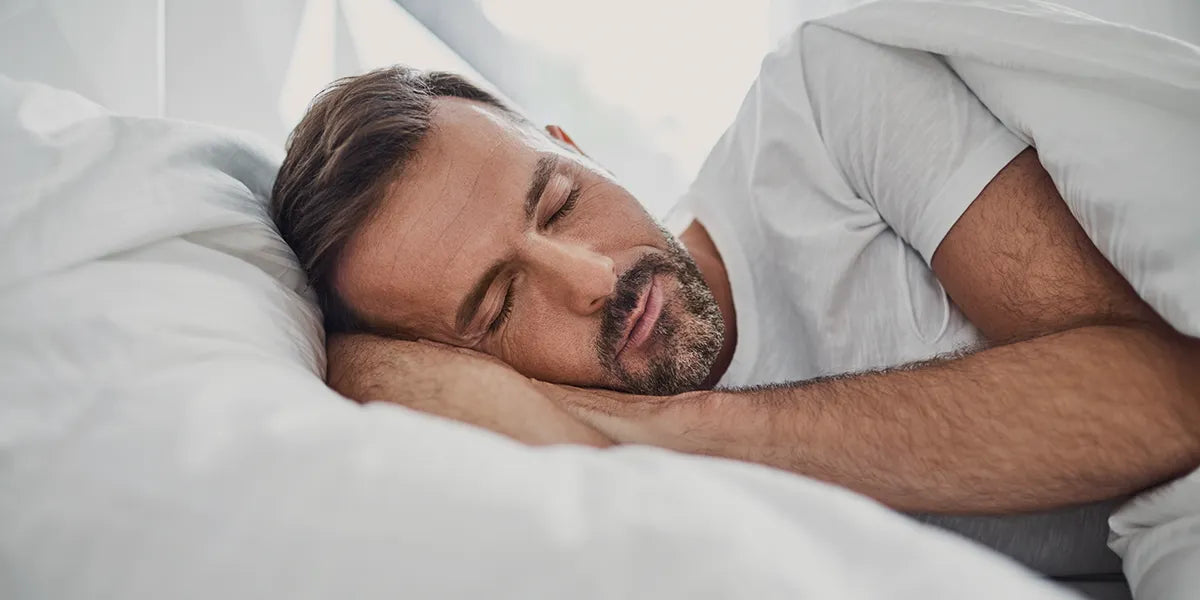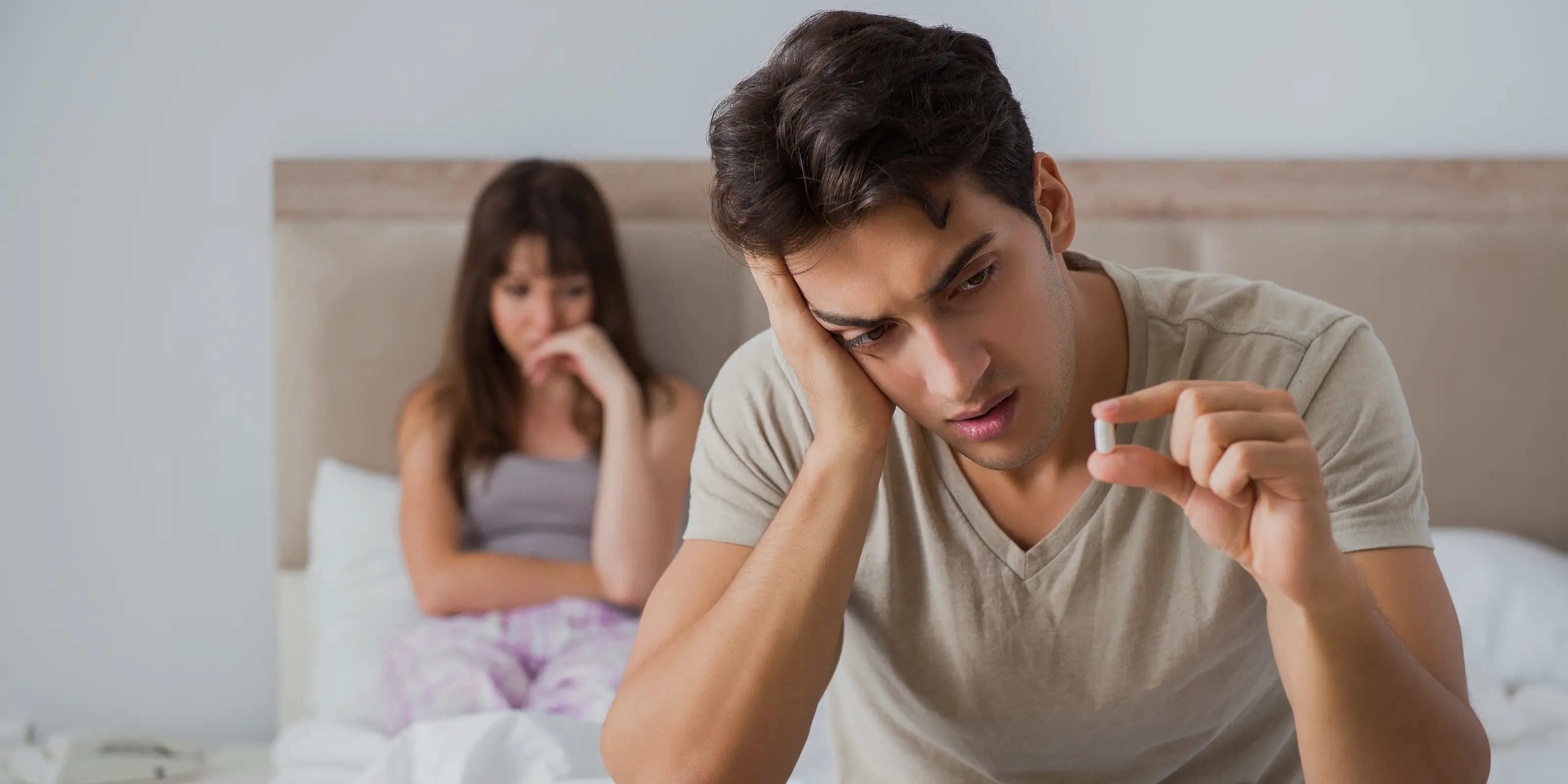Is it normal to lose hair while you sleep? The answer is yes, but to a degree. If you’re alarmed by the amount of hair you find on your pillow every morning, you might be wondering what you can do to prevent hair loss while you sleep.
In this article, we’ve highlighted 5 ways to help prevent hair loss while you sleep. Anyone can add these healthy habits to their bedtime routine to lower the risk of hair breakage, reduce damage to hair follicles and combat hair loss.
1. Don’t skimp on sleep
The Centre for Disease Control and Prevention (CDC) estimates that around 35% of adults in the United States don’t get the recommended 7-9 hours of sleep each night (CDC, 2020). When you don’t get enough rest, your body produces more of the stress hormone cortisol. Cortisol can do a number on healthy hair, stunting hair growth and even causing hair to shed prematurely.
Getting enough sleep is one of the easiest things you can do to improve your overall health and help prevent hair loss in your sleep. Consider making an early New Year’s resolution to hit the hay a little earlier every evening.
2. Change your bedding often
While they may still look clean and bright, your week-old sheets can trap bacteria, hair and skin particles. Exposure to bacteria can cause a variety of skin and hair woes, including skin irritation, dryness, redness and scaling. It may also contribute to the development of fungal or bacterial infections of the hair follicle.
A good rule of thumb is to swap out your pillowcase every 5-7 days. Make sure to cleanse your face before your head hits the pillow to help keep bacteria growth at bay.
Many hairdressers and hair care specialists encourage 100% silk pillowcases to prevent hair loss in your sleep. Silk bedding is thought to reduce the amount of friction against your scalp, promoting a more hair-safe sleep and minimizing morning frizz.
3. De-stress before bed
Research has shown that stress can affect everything from metabolism to hair, skin and nail health. During periods of both short and long-term stress, your body ramps up cortisol production. Cortisol, colloquially referred to as the stress hormone, interferes with the hair growth cycle. It signals the body to cut the active growth phase (anagen) short and enter the resting phase (telogen) prematurely.
Your hair doesn’t become as long or strong as it should and the quality of your mane suffers over time. What’s more, elevated cortisol is thought to trigger certain types of hair loss. Androgenetic alopecia (male pattern hair loss), a type of autoimmune hair loss called alopecia areata and a stress-related hair shedding called telogen effluvium.
Try to carve out some time to de-stress each night. Journaling, practicing mindfulness and deep breathing exercises are great ways to relax. Or, you might opt for a guided meditation or virtual yoga session from the comfort of your bedroom. Any downtime is a step in the right direction for your mental health and your hair health.
4. Don't wear a tight hairstyle to bed
The structure of the hair is porous. Saturated with water, the chemical bonds that make up each shaft are weakened, leaving hair less structurally sound and more susceptible to breakage. Simply put, your hair isn’t as strong once it’s wet.
Research overseen by the Korean Dermatological Association suggests that prolonged periods of moisture, such as going to bed with wet hair, can be more detrimental to hair health than high-temperature heat styling (Lee et al. 2011).
If a shower or bath is part of your nightly ritual, try to let your hair dry before you situate yourself in bed. Air-drying is best, but you can also speed along the process by blow-drying on low heat until your locks are mostly dry.
5. Don’t style your hair in a tight knot for bed
When you pull your hair back into a taut ‘do on a regular basis, you’re putting a lot of strain on hair follicles. Hair loss resulting from prolonged or recurring tension on hair follicles is called traction alopecia (Bilero and Miteva, 2018). This is especially true if you sport a ponytail, bun or braids in bed, or if you make an effort to keep your coiffure intact overnight.
Certain techniques that are used to preserve hard-to-achieve hairstyles overnight can create undue tension on your hair and ultimately promote premature shedding. The specific type of friction your tresses experience as you move around in your sleep has been dubbed nocturnal traction (Samrao et al. 2021).
The best way to avoid this type of hair loss is by being proactive. If possible, avoid tying long hair back too tightly when you go to bed. Instead, try gathering your hair into a loose, low ponytail using a fabric scrunchie to minimize potential damage and prevent hair loss as you sleep.
Prevent hair loss while sleeping: Takeaway
There aren’t any miracle hair loss treatments that will reverse hair loss or completely restore your tresses overnight. But there are small steps you can take to improve hair health, increase the rate of hair growth and minimize the risk of damage to your hair while you recharge.




